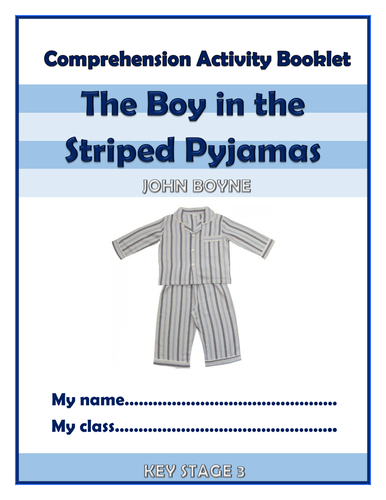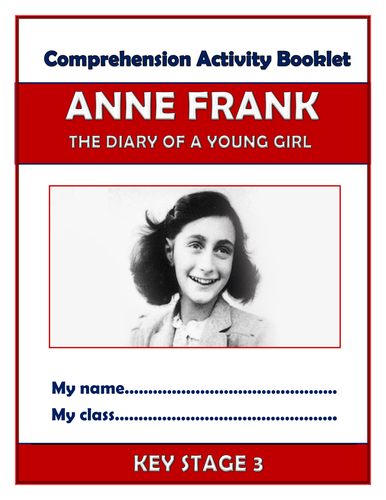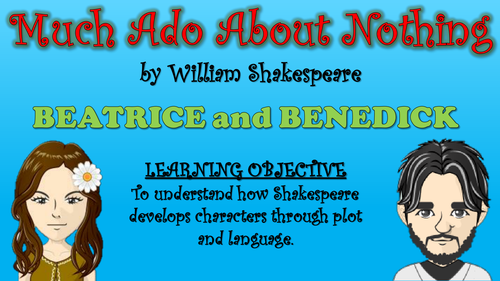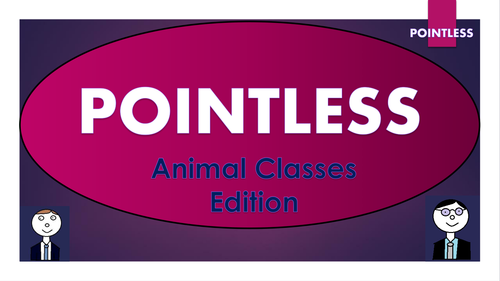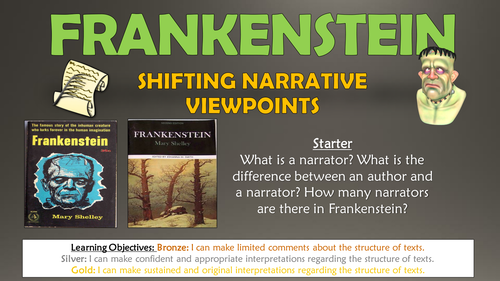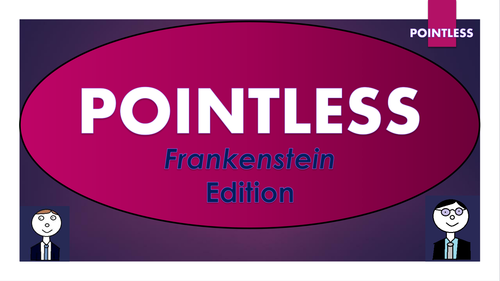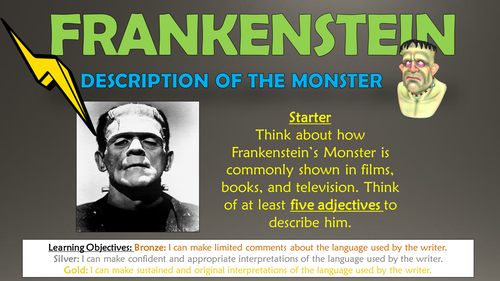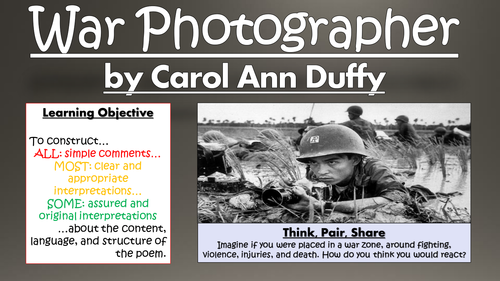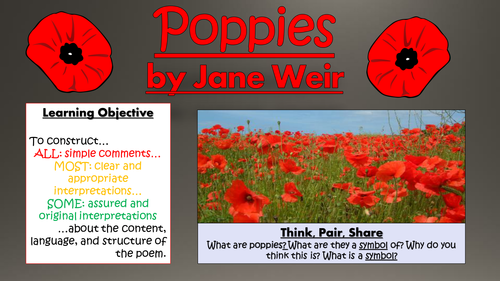
3k+Uploads
1904k+Views
2237k+Downloads
Pedagogy and professional development
Bundle Sale

The Boy in the Striped Pyjamas Resources Bundle!
These varied and engaging resources have been designed to enhance the learning of John Boyne’s ‘The Boy in the Striped Pyjamas.’ They are perfect for aiding and developing comprehension, and also gaining a secure understanding of the social and historical context of the novel.
Included in this resources bundle are:
- The Boy in the Striped Pyjamas Comprehension Activities Booklet - 21 pages of comprehension activities aligned with the text;
- The Boy in the Striped Pyjamas Holocaust Lesson - Enabling students to link the text to its social and historical context;
- The Boy in the Striped Pyjamas Pointless Game - A fun and interactive way of securing understanding of the text.
The Boy in the Striped Pyjamas Knowledge Organiser/ Revision Mat - An hugely detailed resource aiding revision of all aspects of the novel!
All images are licensed for commercial use, and are cited at the end of presentations and in separate documents.
Bundle Sale

Popular Fiction KS3 Comprehension Activity Booklets Big Bundle!
This bundle contains 7 fantastic comprehension activity booklets - each is over 20 pages in length, and focuses upon a different popular classic text. This includes a text by Shakespeare, a play, fiction and non-fiction texts, as prescribed by the National Curriculum.
The resource booklets contain a wide range of age-appropriate, engaging, and meaningful activities - perfect for use throughout class reading of texts or equally in guided reading sessions. They are perfect for aiding the progress of children towards meeting the KS3 comprehension expectations within the National Curriculum framework. Children love learning from these resources, whilst they are also of great use to teachers, as there is explicit information within each task regarding which comprehension strands the task is designed to demonstrate.
There are booklets included for the following texts:
- The Woman in Black
- The Boy in the Striped Pyjamas
- Private Peaceful
- Anne Frank - Diary of a Young Girl
- The Curious Incident of the Dog in the Nighttime
- Stone Cold
- Much Ado About Nothing
There are a huge range of activities! A PDF of each booklet is also provided, to prevent formatting issues.

The Boy in the Striped Pyjamas - KS3 Comprehension Activities Booklet!
This resource booklet contains a wide range of age-appropriate, engaging, and meaningful comprehension activities for use throughout the reading of John Boyne's 'The Boy in the Striped Pyjamas.' Teachers have found them particularly useful in comprehension or guided reading sessions. They are perfect for aiding the progress of children towards meeting the KS3 expectations within the new National Curriculum framework. Children have found these resources extremely engaging, and for teachers there is explicit information within each task regarding which comprehension strands the task is designed to demonstrate. They also relate to key extracts, characters, and themes from the story, ensuring that children gain a deep understanding of the text.
Activities within the booklet include:
- 'Context: The Holocaust' - to enable students to demonstrate that they can: 'Know the purpose, audience and context of the writing and drawing on this knowledge to support comprehension.'
- 'Boyne's Description - The Ending' - to enable students to demonstrate that they can: 'Know how language, including figurative language, vocabulary choice, grammar, text structure and organisational features, present meaning.'
- 'Bruno's Father' and 'Shmuel' - to enable students to demonstrate that they can: 'Study setting, plot, and characterisation, and the effects of these.'
- 'Vocabulary Inspector' - to enable students to demonstrate that they can: 'Learn new vocabulary, relating it explicitly to known vocabulary and understanding it with the help of context and dictionaries.'
Plus many, many more activities (the booklet is 21 pages in length!) I've also added it as a PDF in case the formatting differs on your computer.
All images are licensed for commercial use, and are cited on a separate document (included).

Anne Frank - Diary of a Young Girl - KS3 Comprehension Activities Booklet!
This resource booklet contains a wide range of age-appropriate, engaging, and meaningful comprehension activities for use throughout the reading of Anne Frank's 'Diary of a Young Girl.' Teachers have found them particularly useful in comprehension or guided reading sessions. They are perfect for aiding the progress of children towards meeting the KS3 expectations within the new National Curriculum framework. Children have found these resources extremely engaging, and for teachers there is explicit information within each task regarding which comprehension strands the task is designed to demonstrate. They also relate to key extracts, characters, and themes from the story, ensuring that children gain a deep understanding of the text.
Activities within the booklet include:
- 'Context: The Holocaust' - to enable students to demonstrate that they can: 'Know the purpose, audience and context of the writing and drawing on this knowledge to support comprehension.'
- 'Anne's Description - The Annex' - to enable students to demonstrate that they can: 'Know how language, including figurative language, vocabulary choice, grammar, text structure and organisational features, present meaning.'
- 'Otto Frank and 'Peter van Daan' - to enable students to demonstrate that they can: 'Study setting, plot, and characterisation, and the effects of these.'
- 'Vocabulary Inspector' - to enable students to demonstrate that they can: 'Learn new vocabulary, relating it explicitly to known vocabulary and understanding it with the help of context and dictionaries.'
Plus many, many more activities (the booklet is 21 pages in length!) I've also added it as a PDF in case the formatting differs on your computer.
All images are licensed for commercial use, and are cited on a separate document (included).

Much Ado About Nothing - Beatrice and Benedick!
This engaging, in-depth lesson enables students to understand how plot and language are utilised to develop the characters of Beatrice and Benedick in William Shakespeare’s ‘Much Ado about Nothing.’
The lesson places a particular focus upon how language is used between the two characters to present the audience with ideas about their intelligence, attitudes, and emotions. Students also analyse how their behaviour develops over the course of the text.
The lesson follows a step-by-step learning journey, in which students learn through:
- Taking part in a fun team quiz to secure understanding of the two characters;
- Completing a 'love graph' (backed up with textual evidence) to show how the prevailing attitudes and emotions of the two characters develops through the text;
- Analysing quotations in which Shakespeare used advanced language techniques to portray both of the characters in a particular light;
- Completing an essay style response in which they consider how Shakespeare's use of language helps to develop the two characters;
- Peer assessing each other's learning attempts.
Included is:
- Whole lesson PowerPoint - colourful and detailed - just download and teach from it!
- Love Graph - to track the two characters' feelings towards one another;
- 'Beatrice and Benedick Quotations' worksheet;
- Analysis template with success criteria for creating well-structured responses;
- Comprehensive lesson plan.
There are also opportunities for group learning, peer assessment, and whole class discussion. This was originally taught to higher-ability year 9 and 10 groups, but can easily be differentiated for groups of different ages and abilities.
Bundle Sale

Super Sentences Lesson Bundle!
These engaging and detailed resources have been designed to make the learning of a range of sentences (aligned with the 2015 National Curriculum) easily accessible, engaging and interesting for all children. Throughout each lesson, students learn to improve their skill at using appropriate, concise, and precise sentences and practice employing them within their own writing compositions. Each lesson contains a comprehensive whole lesson PowerPoint, all the resources that you will need, and a lesson plan.
The pack also includes a literacy writing mat to help students build their extended writing skills.
All images are licensed for commercial use, and are cited on the final slide of the PowerPoint/ the bottom of worksheets.
Bundle Sale

KS2 SPAG Bundle!
These engaging and detailed resources have been designed to make the learning of KS2 SPAG concepts (aligned with the newest National Curriculum standards) easily accessible, engaging and interesting for all children. Throughout each lesson, students learn to improve their skill at using appropriate, concise, and precise spelling, punctuation, and grammar, and practice employing them within their own writing compositions. Each lesson contains a comprehensive whole lesson PowerPoint, all of the worksheets/activity resources that you will need, and a lesson plan.
All images are licensed for commercial use, and are cited on the final slide of the PowerPoint/ the bottom of worksheets.
Bundle

Classifying Animals Lesson, Resources, and Pointless Game!
This bundle contains the 'Classifying Animals' lesson, and also the fun and interactive Animal Classes Pointless Game!
The detailed and engaging lesson enables students to gain an understanding of what animal classes are, and which animals belong to the different categories. Furthermore, they learn to categorise animals themselves, using scientific knowledge of the features of each animal class. Students justify their choices using critical thinking skills.
Students learn through a number of fun and interactive tasks, which enable them to:
- Define each animal class and understand its features;
- Exemplify each animal class, justifying their choices;
- Use research and investigative skills to categorise animals for whom the class is not immediately obvious;
- Evaluate the learning and understanding of themselves and their peers.
The resources include:
-Visually engaging and comprehensive whole-lesson presentation;
-Resources for the card-sorting activity;
-A categorising and justifying worksheet (and answer sheet for teacher);
-An investigation log;
-Step-by-step lesson plan.
To help their investigation write-ups, I've also thrown in the literacy writing mat for free!
All images are licensed for commercial use, and are cited on the final page of the slide.

Animal Classes - Pointless Game!
Based on the popular game show 'Pointless', this resource is perfect for use as a whole lesson resource, enrichment option, or revision tool. Editable, so that you can change to any other topic or change questions. (I've also added a blank template so that you can make your own games from scratch). Containing almost 30 slides of sound clips, engaging visuals, and suitably challenging questions, this resource is effective at both promoting engagement and enhancing learning.
There are several full rounds of questions to build or revisit knowledge of different animal classes and types - an important KS1 Science topic within the National Curriculum.
Round 1. Reptiles
Round 2. Animal Classes
Round 3. Anagrams Round
Round 4. Birds
The nature of this game ensures that the resource can challenge students of all levels.
Bundle Sale

Frankenstein Lesson Bundle! (All Lessons, Resources, Plans, Everything!)
This engaging, varied, and informative scheme of learning is designed to help students gain a valuable understanding of Mary Shelley's horror classic 'Frankenstein.' The lessons enable students to gain a comprehensive understanding of the key features of plot, character, context, and language, in addition to considering the key themes and ideas running throughout the text.
All of the resources that you need are included in the bundle: informative and engaging whole lesson PowerPoints, worksheets, activities, and lesson plans.
The bundle is made up of a wide-range of interesting and exciting lessons, including:
- The Context of Frankenstein;
- Victor Frankenstein - The Tragic Hero;
- Shifting Narrative Viewpoints:
- Shelley's Description of the Monster;
- The Monster's Murders - Justified?
Stimulating, visual, and easily adaptable, these lessons provide suggested learning objectives and outcomes for students of a wide-range of abilities - The vast majority of tasks are differentiated to allow for different abilities and needs in your classroom. Each lesson loosely follows this logical learning journey to ensure that students learn in bite-size steps:
- Engaging
- Defining/ Understanding
- Identifying/Remembering
- Analysing/ Creating
- Peer or self evaluating.
All of the lessons are interactive, employ a variety of different teaching and learning methods and styles, and are visually-engaging.

Frankenstein: Shifting Narrative Viewpoints
This engaging and informative lesson aims to improve students’ understanding of the various narrative perspectives used to develop the plot and characters in Mary Shelley’s 'Frankenstein.' The lesson places a particular focus upon the reporting of William’s death from different narrative points-of-view, focusing on the accounts of Alphonse, Victor, and the Monster. By the end of the lesson, students demonstrate an ability to make sustained and original interpretations of Shelley’s structural choices.
The lesson follows a step-by-step learning journey, in which children learn through:
- Defining the key terms 'author', 'narrator', and 'narrative point of view;'
- Identifying the different narrators within the text;
- Reading and understanding key extracts from chapters 7 and 16 - extracts that detail the same event (William's murder) from multiple perspectives;
- Inferring, interpreting, and analysing the effect of Shelley's structural choices in altering the narrative viewpoints;
- Imagining and describing the events surrounding William's murder from another perspective;
- Peer assessing each other's learning attempts.
Included is:
- Whole lesson PowerPoint - colourful and substantial; (including an animated Frankenstein's monster to guide them through the lesson);
- Descriptive devices worksheet (and a teacher answer sheet);
- Extract from the beginning of Chapter 5;
- Inferring and Interpreting worksheet;
- Analysis template with success criteria for creating well-structured responses;
- Comprehensive lesson plan.
There are also opportunities for group learning, peer assessment, and whole class discussion. This was originally taught to middle-ability year 9/10 groups, but can easily be differentiated for groups of different ages and abilities.
All images are licensed for commercial use, and image rights are listed on the last page of the presentation.

Frankenstein: The Monster's Murders: Justified?
This lesson aims to improve students’ understanding of plot and characterisation in Mary Shelley’s gothic horror novel 'Frankenstein,' through critical engagement with the monster’s justification for murder. The lesson places a particular focus upon the hardship and suffering experienced by the monster, in addition to the discrimination and loneliness that he experiences. The lesson concludes with students completing a highly-informed argumentative piece, detailing whether they feel the monster was justified or not.
The lesson follows a step-by-step learning journey, in which children learn through:
- Recalling and understanding who, when, and why the monster kills individuals throughout the text;
- Reading and understanding key extracts from the text, which include third-person narration from the monster discussing his actions;
- Comprehending the key elements of plot development and character, through interpreting and inferring the key meanings in extracts;
- Listing opposite sides of an argument in regarding the monster's justification, in order to build a stronger case;
- Using the features of writing to argue in order to contend whether the monster was justified in his actions or not;
- Peer assessing each other's learning attempts.
Included is:
- Whole lesson PowerPoint - colourful and substantial; (including an animated Frankenstein's monster to guide them through the lesson);
- Comprehension worksheet (and a teacher answer sheet);
- Extracts from Chapters 16 and 24;
- Card-sorting resources for the introduction task;
- Writing to Argue Help-sheet;
- Analysis template with success criteria for creating well-structured responses;
- Comprehensive lesson plan.
There are also opportunities for group learning, peer assessment, and whole class discussion. This was originally taught to middle-ability year 9/10 groups, but can easily be differentiated for groups of different ages and abilities.
All images are licensed for commercial use, and image rights are listed on the last page of the presentation.

Frankenstein: Pointless Game!
Based on the popular game show 'Pointless', this resource is perfect for use as a whole lesson resource, enrichment option, or revision tool. Editable, so that you can change to any other topic or change questions. (I've also added a blank template so that you can make your own games from scratch). Containing almost 30 slides of sound clips, engaging visuals, and suitably challenging questions, this resource is effective at both promoting engagement and enhancing learning. There are several full rounds of questions to build or revisit knowledge of characters, plot, and themes in 'Frankenstein.'
Round 1. The characters in Frankenstein
Round 2. Quotations from the text
Round 3. Settings, themes, and objects
Round 4. Who dies?
The nature of this game ensures that the resource can challenge students of all levels.
A blank template has also been added, so that you can create your own games!

Frankenstein: Shelley's Description of the Monster!
This lesson aims to improve students’ understanding of the descriptive language used to depict the monster in Chapter 5 of Mary Shelley’s horror novel 'Frankenstein.' The lesson places a particular focus upon the descriptive language devices employed by Shelley, in order to create a clear image of the monster’s appearance in the reader's mind, and also to describe Victor’s strong reaction to his creation. By the end of the lesson, students demonstrate an ability to make sustained and original interpretations of the language used by the author.
The lesson follows a step-by-step learning journey, in which children learn through:
- Considering how their preconceptions about the monster have been influenced by modern media and representations;
- Read and understand a key extract from the beginning of chapter 5 - the point at which the monster comes to life;
- Infer and interpret the key developments of the extract, including Frankenstein's changing feelings and the monster's ambiguous actions;
- Identifying and analysing some of the key descriptive devices used by Shelley to create an image of the monster;
- Analysing the effect of the descriptive devices upon the reader;
- Peer assessing each other's learning attempts.
Included is:
- Whole lesson PowerPoint - colourful and substantial; (including an animated Frankenstein's monster to guide them through the lesson);
- Descriptive devices worksheet (and a teacher answer sheet);
- Extract from the beginning of Chapter 5;
- Inferring and Interpreting worksheet;
- Analysis template with success criteria for creating well-structured responses;
- Comprehensive lesson plan.
There are also opportunities for group learning, peer assessment, and whole class discussion. This was originally taught to middle-ability year 9/10 groups, but can easily be differentiated for groups of different ages and abilities.
All images are licensed for commercial use, and image rights are listed on the last page of the presentation.

Frankenstein: The Context of Frankenstein
This engaging and detailed lesson aims to improve students’ understanding of the social and historical context of Mary Shelley’s gothic horror novel: Frankenstein. The lesson places a particular focus upon the developments in health, science, and technology at the time the text was written and set, the locations visited by the author, and the life of Mary Shelley. By the end of the lesson, students demonstrate their ability to link their understanding of context to specific sections of the text.
The lesson follows a step-by-step learning journey, in which children learn through:
- Considering how life has changed between the end of the 18th Century and the present day;
- Researching key information about health, scientific understanding, and major events in the late 1700s;
- Understanding the features of locations in the novel, and interpreting what they may symbolise;
- Developing their understanding of the author: Mary Shelley, and considering the key events in her life that influenced her writing of Frankenstein;
- Linking knowledge of time, place, and author, and relating these to specific areas of the text;
- Peer assessing each other's learning attempts.
Included is:
- Whole lesson PowerPoint - colourful and substantial; (including an animated Frankenstein's monster to guide them through the lesson, and links to helpful websites);
- Comparison between 1700s and the present day worksheet (and a teacher answer sheet);
- Card sorting activity based on locations in the novel;
- Mary Shelley worksheet (and a teacher answer sheet);
- Analysis template with success criteria for creating well-structured responses;
- Comprehensive lesson plan.
There are also opportunities for group learning, peer assessment, and whole class discussion. This was originally taught to middle-ability year 9/10 groups, but can easily be differentiated for groups of different ages and abilities.
All images are licensed for commercial use, and image rights are listed on the last page of the presentation. NOTE: One of the tasks requires access to researching materials, e.g. internet or library access.
Bundle Sale

Edexcel Conflict Poetry Lesson Bundle!
This engaging, varied, and informative scheme of learning is designed to help students gain a valuable understanding of the content, language, and structure features of a number of conflict poems, each of which are studied as a part of Edexcel’s new English Literature syllabus.
Made up of a wide-range of interesting and exciting lessons, students should complete this scheme having gathered vital skills in: interpreting the significant meanings poems, understanding the writer’s ideas within poems, understanding the social and historical contexts of the different wars/conflicts, and analysing features of content, language, and structure. Included are lessons on:
- The Charge of the Light Brigade - Alfred, Lord Tennyson
- Poppies - Jane Weir
- War Photographer - Carol Ann Duffy
- What Were They Like? - Denise Levertov
- PLUS A lesson on how to compare poems!
Stimulating, visual, and easily adaptable, these lessons provide suggested learning objectives and outcomes for students of a wide-range of abilities - The vast majority of tasks are differentiated to allow for different abilities and needs in your classroom. Each lesson loosely follows this logical learning journey to ensure that students learn in bite-size steps:
- Engaging
- Defining/ Understanding
- Identifying/Remembering
- Analysing/ Creating
- Peer or self evaluating.
All of the lessons are interactive, employ a variety of different teaching and learning methods and styles, and are visually-engaging. Resources, worksheets, and lesson plans are all provided.

War Photographer - Carol Ann Duffy
This engaging, comprehensive lesson aims to improve students’ understanding of Carol Ann Duffy’s contemporary war poem ‘War Photographer’ with particular focus upon the language and structure used within the poem to depict the photographer’s experiences. By the end of the lesson, students demonstrate their knowledge of the text analytically, through assured, appropriate, and sustained interpretations.
The lesson follows a step-by-step learning journey, in which children learn through:
- Defining the role of the war photographer, and understanding difficulties in their job;
- Securing contextual understanding of Carol Ann Duffy - the poet;
- Reading and interpreting the poem, using a provided line-by-line analysis, and interactive group activities;
- Developing their understanding through inferring and analysing key language and structural choices;
- Understanding how the war photographer's life varies between war-torn locations and 'Rural England;'
- Analysing how language and structure are used to portray the photographer' experiences;
- Peer assessing each other's learning attempts.
Included is:
- Whole lesson PowerPoint - colourful and substantial; (including hyperlinks to informative and engaging videos)
- Copy of poem;
- Deeper thinking worksheet (including a scaffolded version, and a teacher answer sheet);
- Analysis template with success criteria for creating well-structured responses;
- Comprehensive lesson plan.
There are also opportunities for group learning, peer assessment, and whole class discussion. This was originally taught to middle-ability year 9/10 groups, but can easily be differentiated for groups of different ages and abilities.
All images are licensed for commercial use, and image rights are listed on the last page of the presentation.

Poppies - Jane Weir
This engaging, comprehensive lesson aims to improve students’ understanding of Jane Weir’s contemporary war poem ‘Poppies’ with particular focus upon the symbolism, language, and structure used within the poem. By the end of the lesson, students demonstrate their knowledge of the text analytically, through assured, appropriate, and sustained interpretations.
The lesson follows a step-by-step learning journey, in which children learn through:
- Defining what symbols are, and considering some popular examples (including poppies);
- Securing contextual understanding of both the use of poppies, and Jane Weir the poet;
- Reading and interpreting the poem, using a provided line-by-line analysis, and interactive group activities;
- Developing their understanding through inferring and analysing key language and structural choices;
- Analysing how the themes of loss and remembrance are conveyed through Weir's use of symbolism;
- Peer assessing each other's learning attempts.
Included is:
- Whole lesson PowerPoint - colourful and substantial; (including hyperlinks to informative and engaging videos)
- Copy of poem;
- Deeper thinking worksheet (and teacher answer sheet);
- Analysis template with success criteria for creating well-structured responses;
- Comprehensive lesson plan.
There are also opportunities for group learning, peer assessment, and whole class discussion. This was originally taught to middle-ability year 9/10 groups, but can easily be differentiated for groups of different ages and abilities.
All images are licensed for commercial use, and image rights are listed on the last page of the presentation.

Ozymandias - Percy Bysshe Shelley
This engaging, comprehensive lesson provides an interesting and highly-informative study of Percy Bysshe Shelley's power and conflict poem: 'Ozymandias.' Throughout the lesson, students gain a detailed understanding of the poem, with a particular focus upon the content, language, and structural features employed by Shelley. By the end of the lesson, students demonstrate their knowledge of the text analytically, through assured, appropriate, and sustained interpretations.
The lesson follows a step-by-step learning journey, in which children learn through:
- Defining the key concept of power, and considering its role and implications in man's actions;
- Securing contextual understanding of both Ozymandias the ruler, and Percy Bysshe Shelley the poet;
- Reading and interpreting the poem, using a provided line-by-line analysis, and interactive group activities;
- Developing their understanding through inferring and analysing key language and structural choices;
- Analysing how the theme of power is explored through Shelley's content, language, and structure;
- Peer assessing each other's learning attempts.
Included is:
- Whole lesson PowerPoint - colourful and substantial; (including hyperlinks to informative and engaging videos)
- Copy of poem;
- Content, language and structure mind map;
- Deeper thinking worksheet;
- Analysis template with success criteria for creating well-structured responses;
- Comprehensive lesson plan.
There are also opportunities for group learning, peer assessment, and whole class discussion. This was originally taught to middle-ability year 9/10 groups, but can easily be differentiated for groups of different ages and abilities.
All images are licensed for commercial use, and image rights are listed on the last page of the presentation.
Bundle Sale

Punctuation Lesson Bundle!
These engaging and detailed resources have been designed to make the learning of tricky punctuation concepts (which are particularly prominent in the most recent curriculum) easily accessible, engaging and interesting for all children. Throughout each lesson, students learn to improve their skill at using appropriate, concise, and precise spelling, punctuation, and grammar, and practice employing them within their own writing compositions. Each lesson contains a comprehensive whole lesson PowerPoint, all the resources that you will need, and a lesson plan.
Included are lessons on:
- Awesome Apostrophes and Incredible Inverted Commas;
- Ellipses, Question Marks, and Exclamation Marks;
- Using Colons and Semi-colons.
The pack also includes a literacy writing mat to help students build their extended writing skills.
All images are licensed for commercial use, and are cited on the final slide of the PowerPoint/ the bottom of worksheets.



